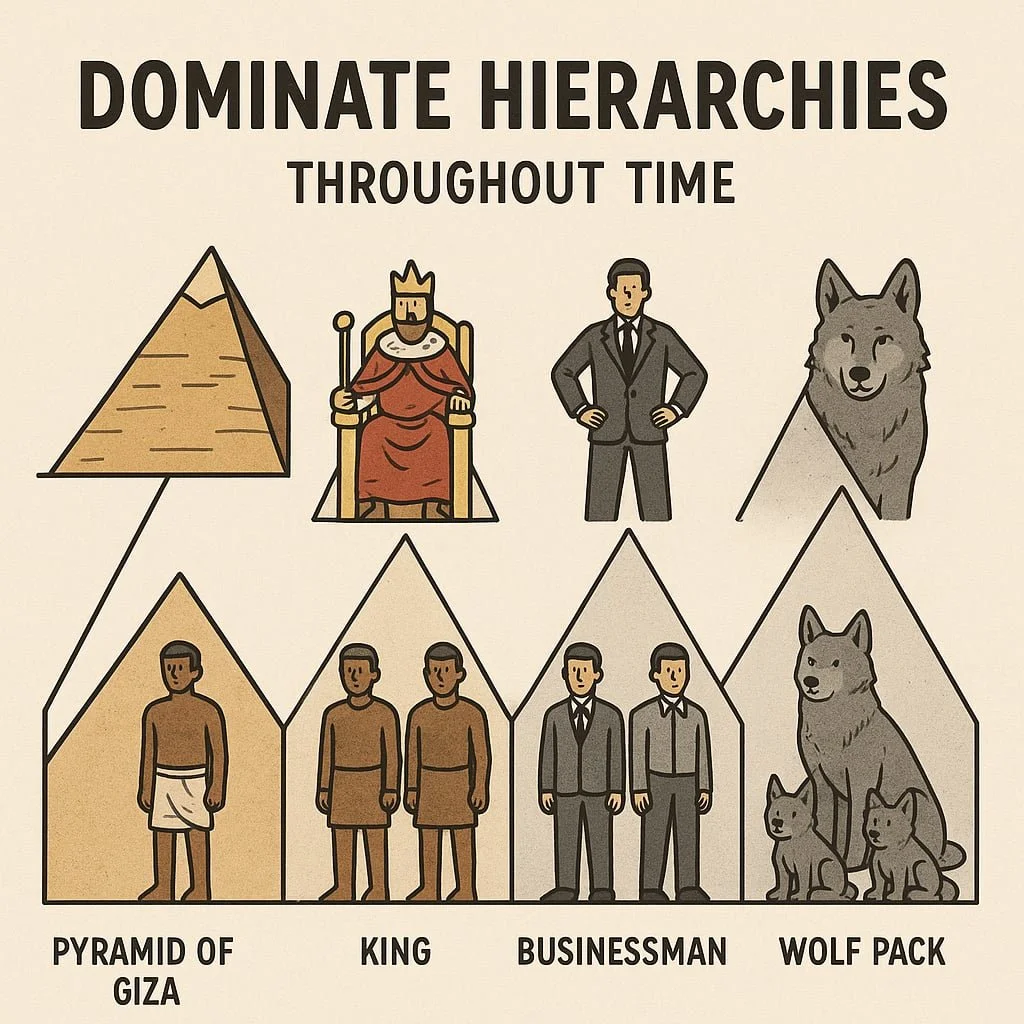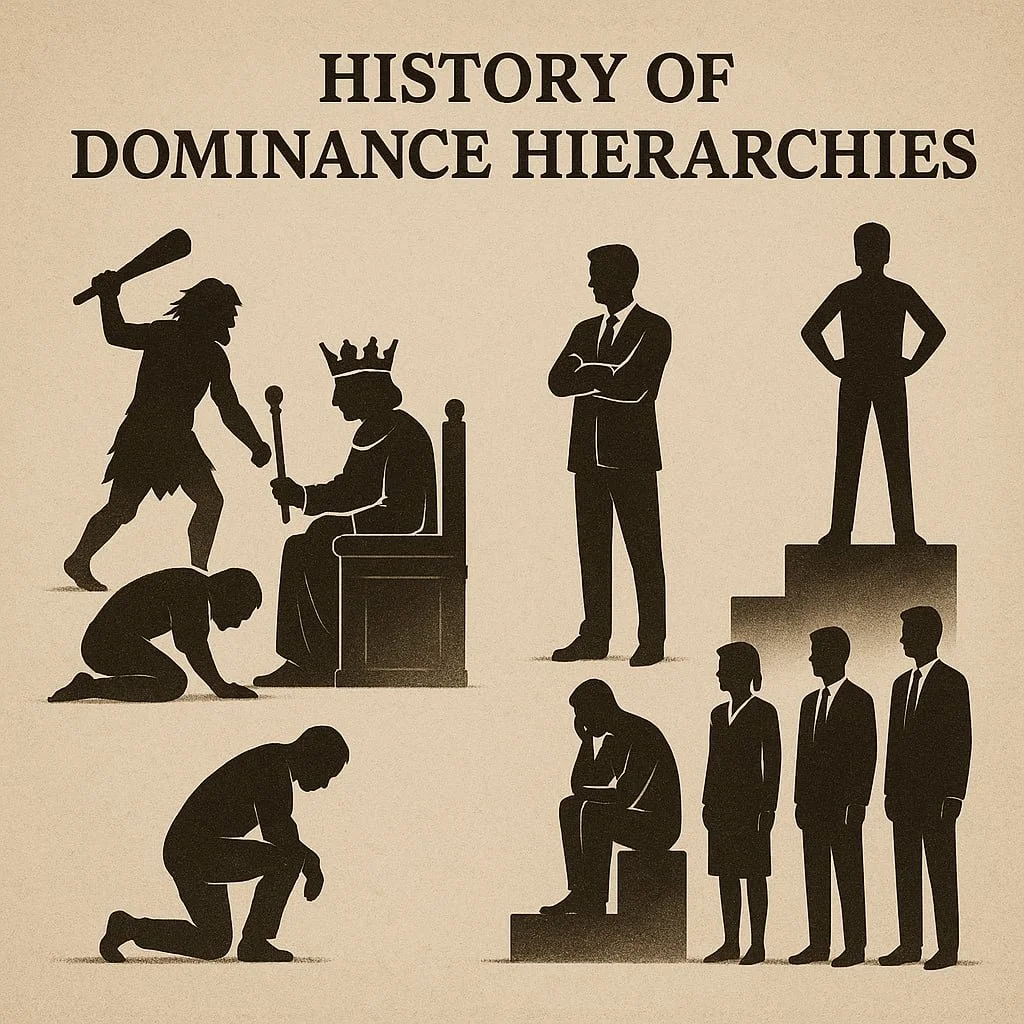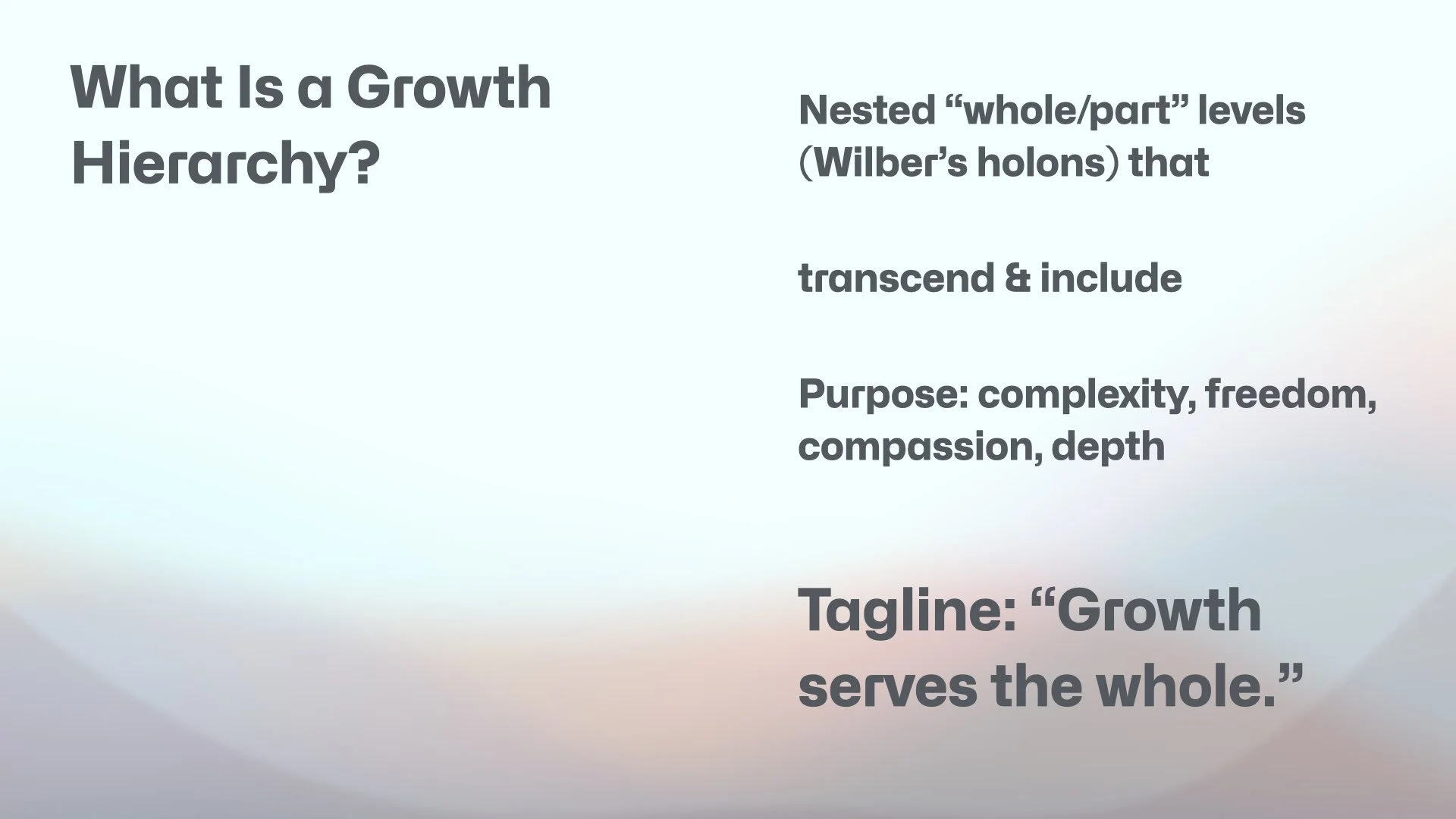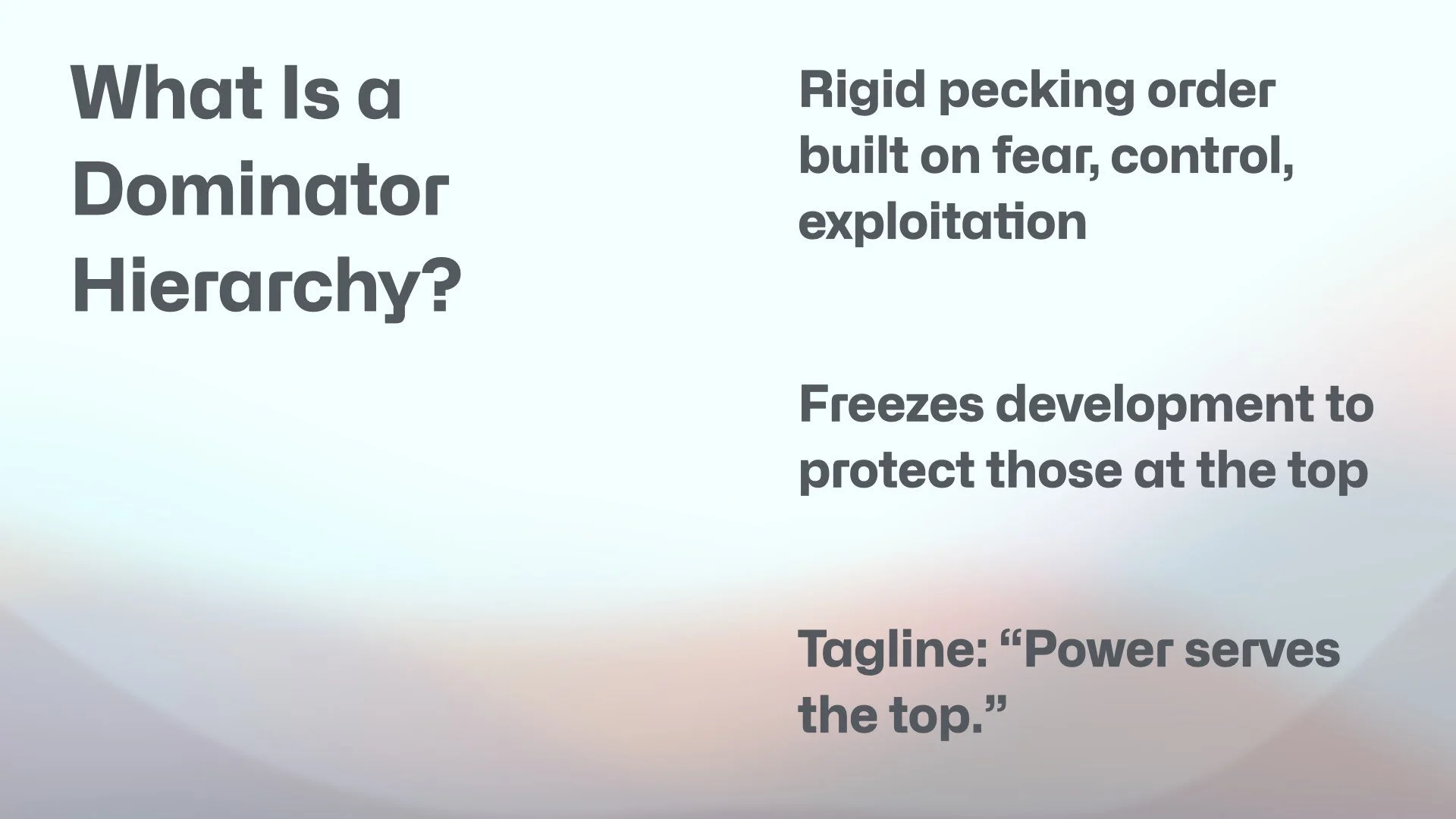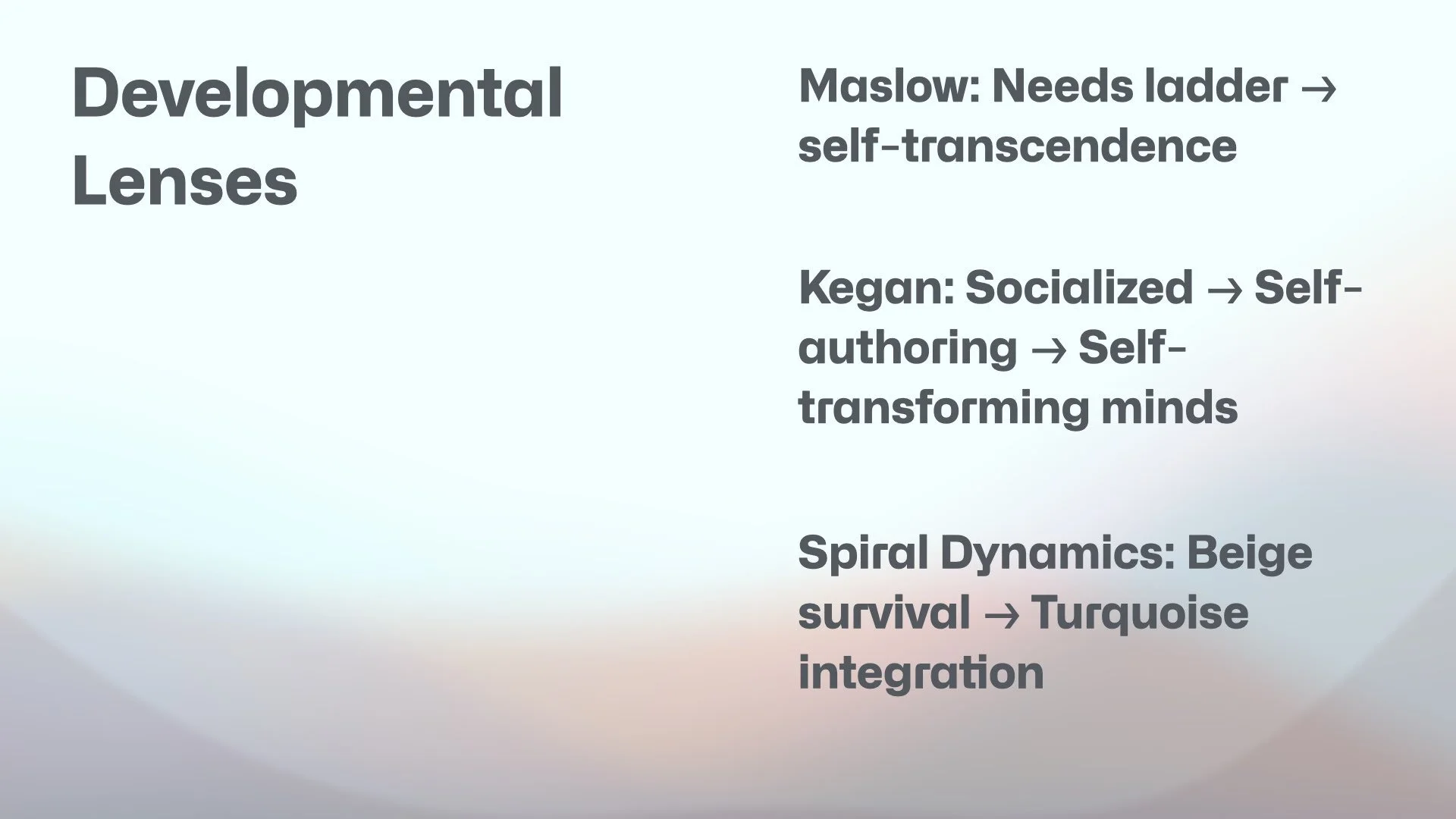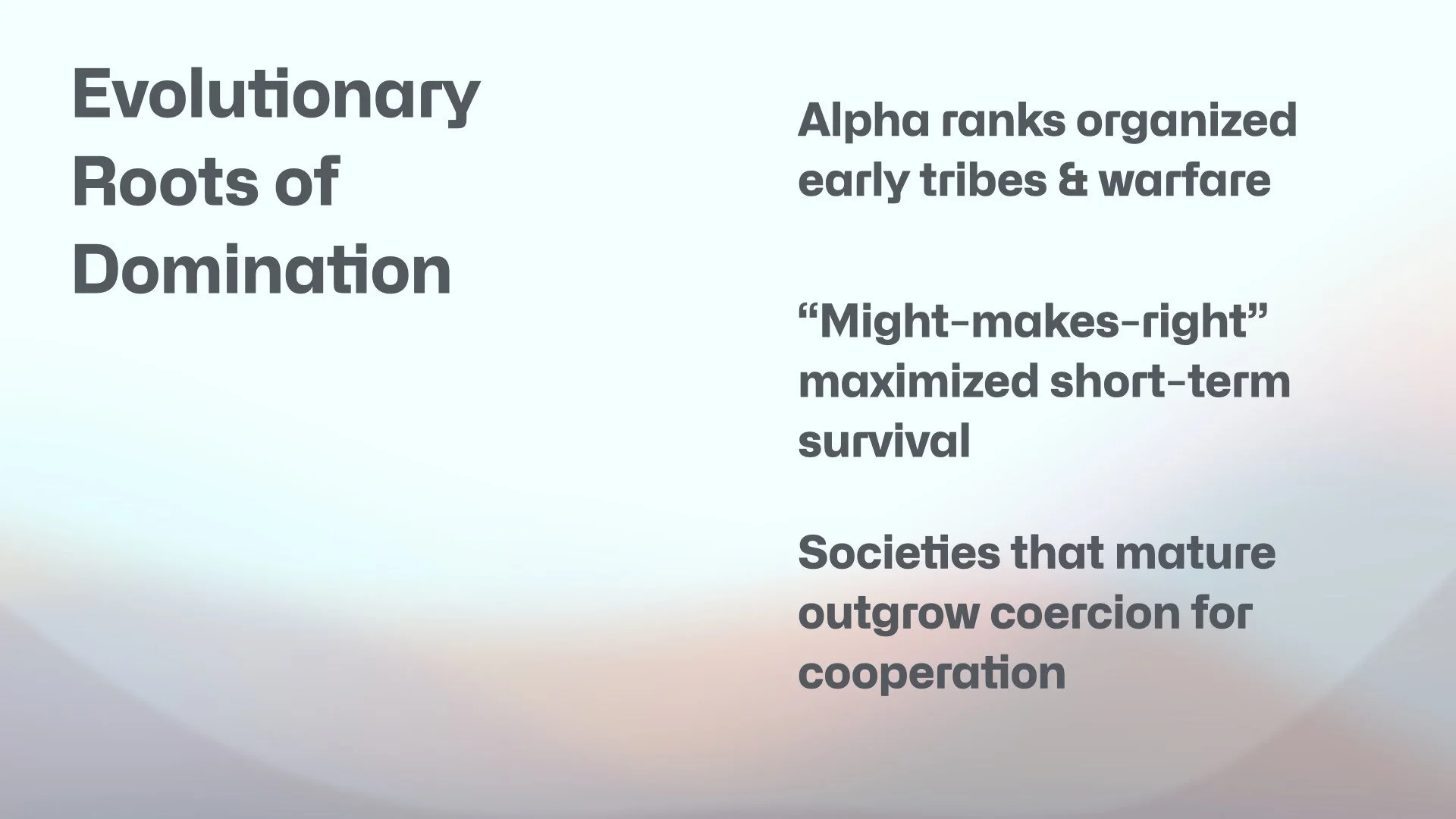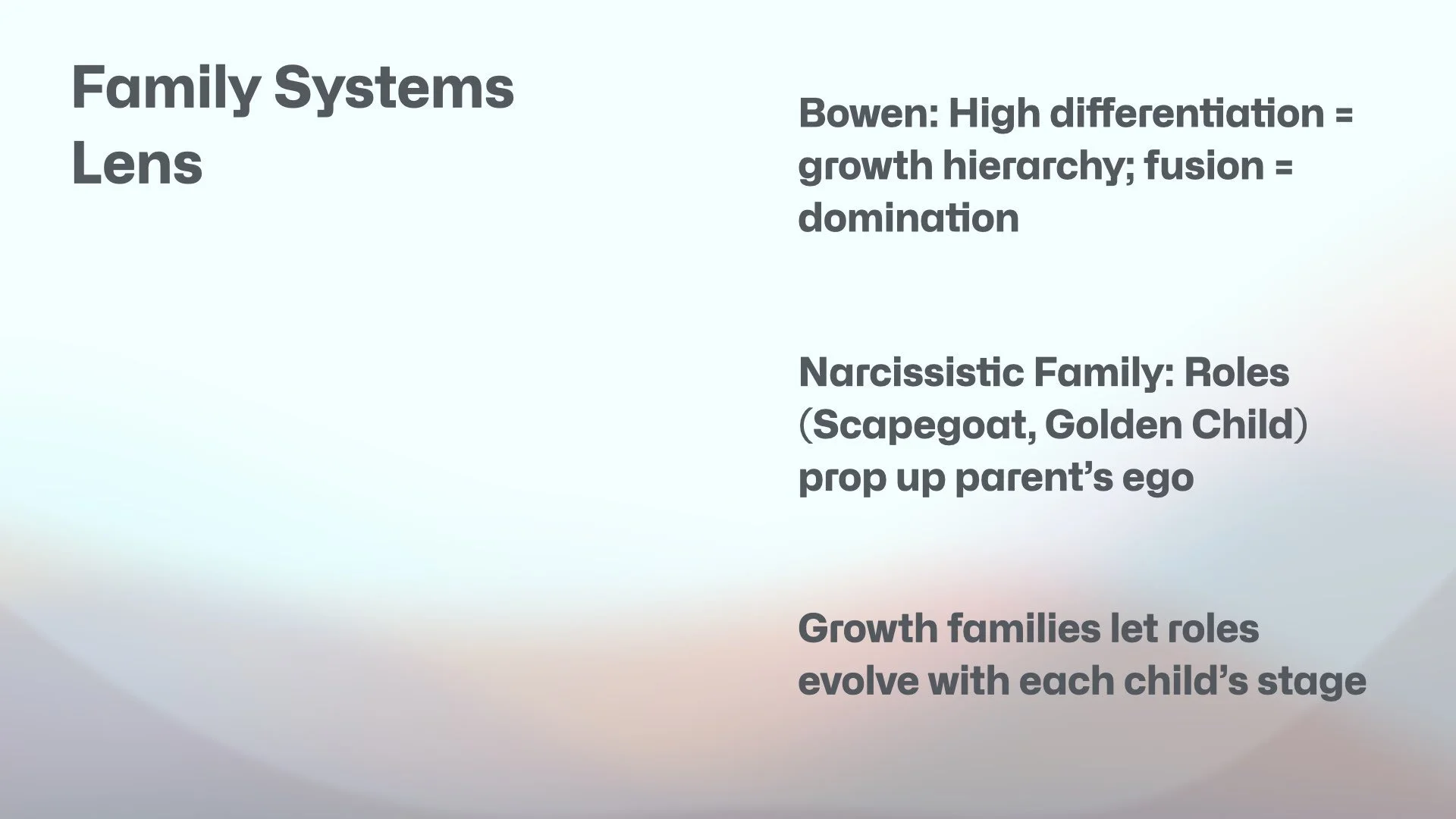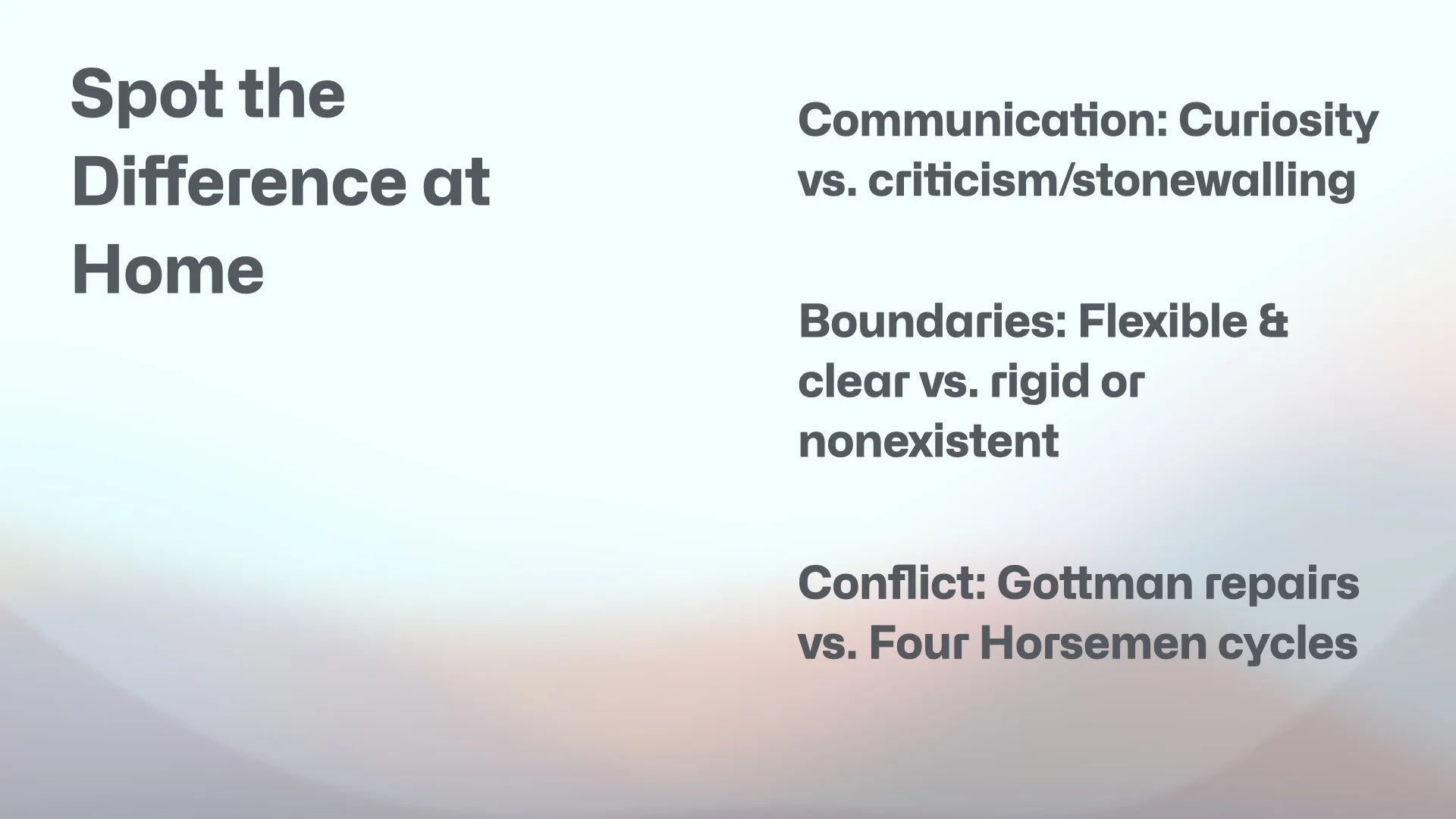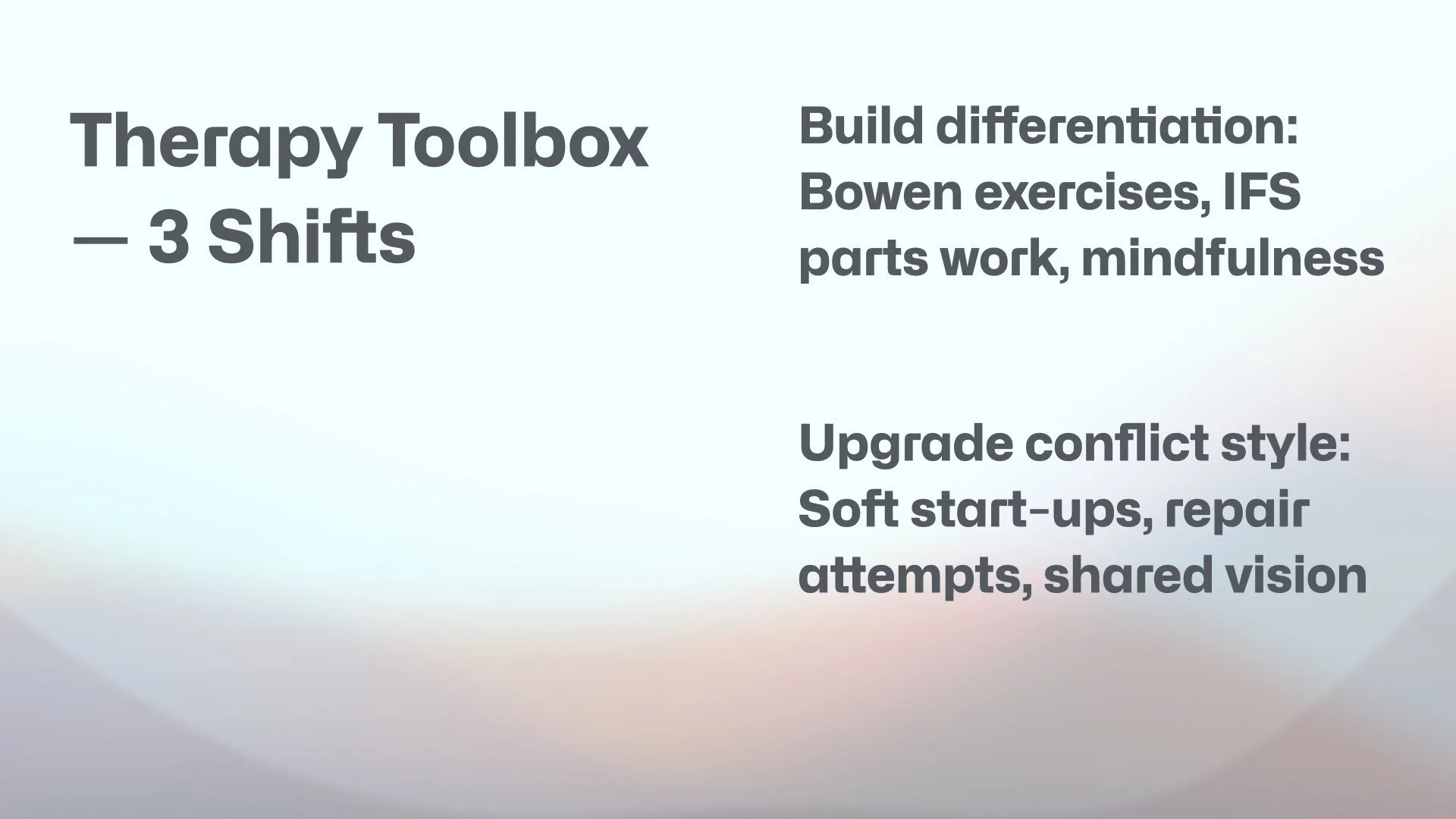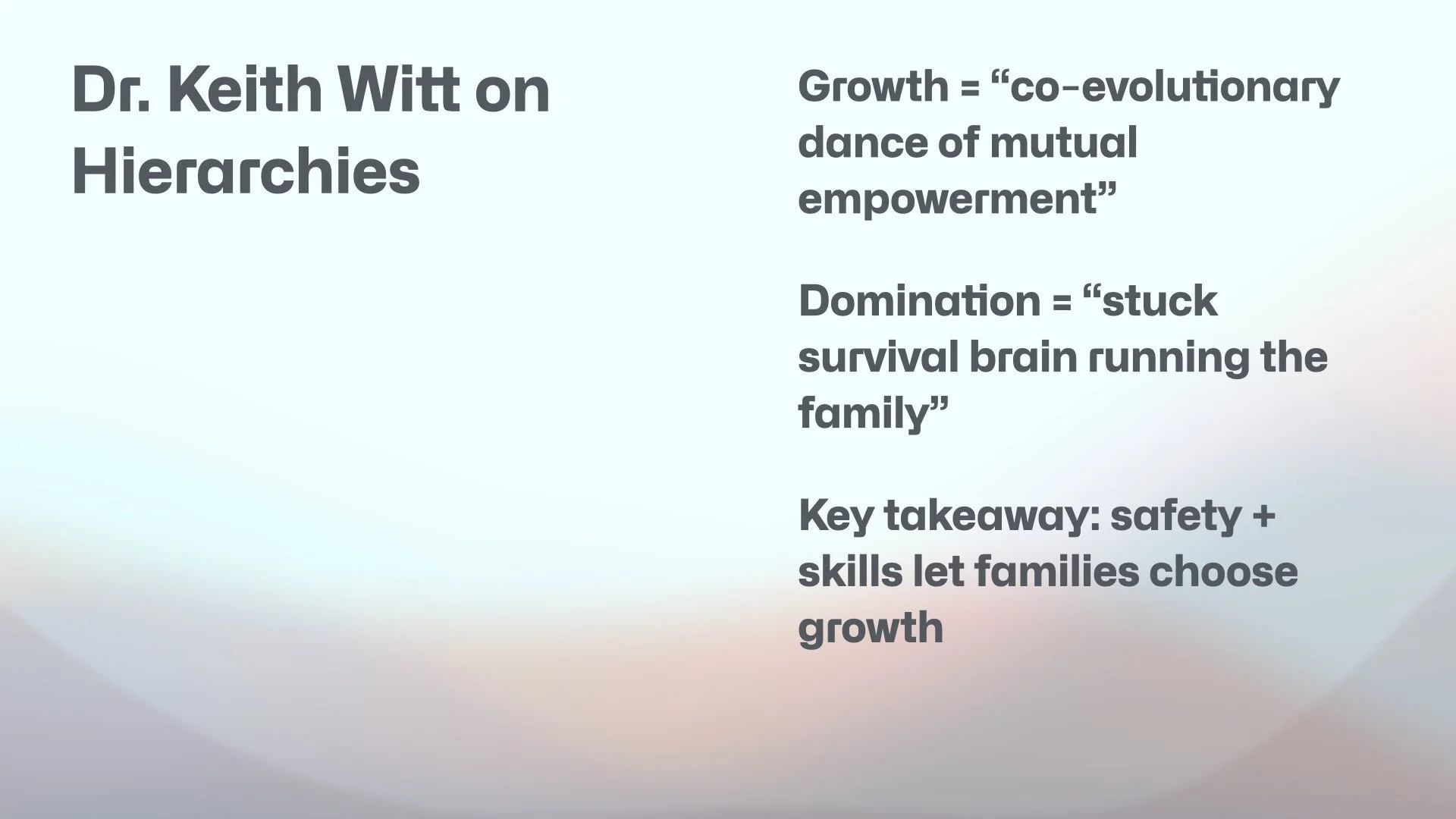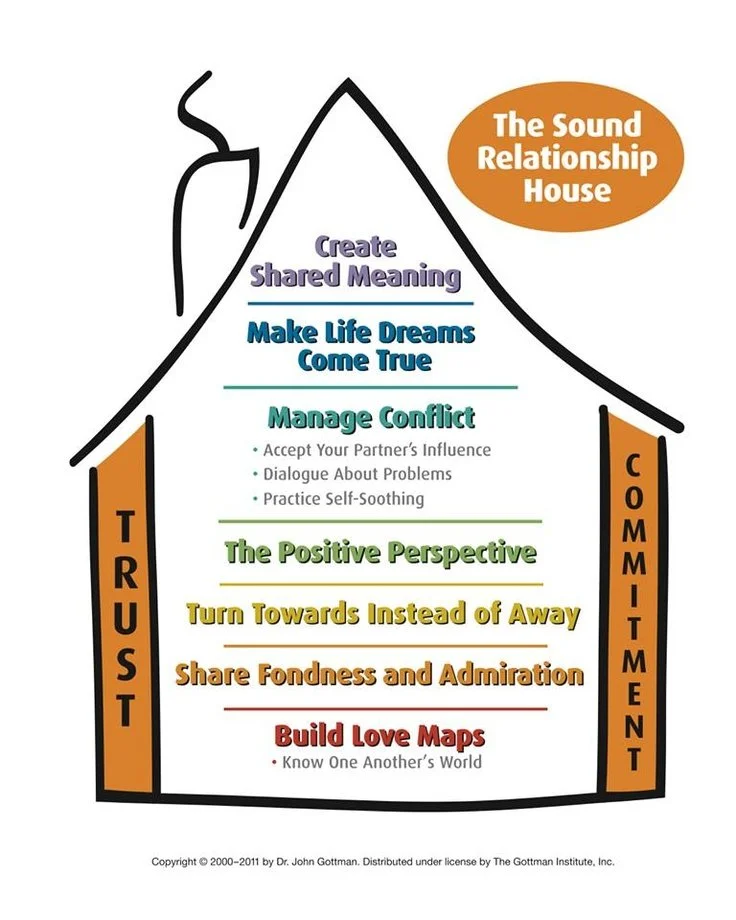Shift Toxic Family Hierarchies to Growth & Differentiation
1. Growth Hierarchy vs. Dominant Hierarchy—Why the Distinction Matters
A dominant hierarchy is “pecking-order politics”—fear, control, exploitation. It freezes development to protect those at the top (think narcissistic parents who assign a scapegoat to keep the spotlight off themselves). A growth hierarchy, by contrast, “transcends and includes” lower stages, nurturing every member’s maturation and shared resilience.
Ask yourself: Which style shows up at your dinner table tonight?
2. Integral Theory’s “Whole/Part” Lens
Philosopher Ken Wilber’s notion of holons says every entity is both a whole and a part. A child is a complete person and part of a family; the family is complete and part of a community. Healthy hierarchies honor both identities—they don’t force parts to serve the whole at their own expense.
3. Developmental Ladders: From Maslow to Kegan
- Maslow’s Hierarchy of Needs – Survival ➜ Safety ➜ Belonging ➜ Self-Esteem ➜ Self-Transcendence. Dominant families often keep everyone stuck below the self-esteem tier.
- Robert Kegan’s stages in In Over Our Heads – Socialized Mind ➜ Self-Authoring Mind ➜ Self-Transforming Mind. Growth hierarchies actively coach each member from external validation to self-authorship.
Use these ladders to audit where your household stalls and how far it could go.
4. Spiral Dynamics: Color Clashes in the Living Room
Spiral Dynamics (Beck & Cowen) color-codes worldviews—Red power vs. Green pluralism, for example. In many families the red “Because I said so!” mindset clashes with green “Everyone gets a voice.” Dominant hierarchies polarize; growth hierarchies help members translate between colors.
5. Evolutionary Roots of Domination
Remember: the “alpha” script once kept early humans alive. Today those reflexes surface as fight-flight reactivity or “might-makes-right” parenting. Awareness is the first step toward choosing cooperation over raw survival code.
6. Bowen Differentiation: Calm in the Emotional Storm
Family-systems pioneer Murray Bowen taught that low differentiation equals high fusion: emotions spread like wildfire. Growth hierarchies encourage each person to self-soothe, set flexible boundaries, and stay connected without losing self.
Try it: When tension spikes, ground yourself with a 6-second exhale before speaking.
7. Narcissistic Roles: Scapegoat, Golden Child & the Ego Pyramid
Dominant systems often assign rigid roles—scapegoat, golden child, hero, mascot—to prop up parental ego. Growth hierarchies let roles evolve with each developmental leap, avoiding lifelong labels.
8. Gottman Skill-Building for a Growth Hierarchy
Relationship researcher John Gottman identifies two fast fixes:
- Soft Start-Up – Replace blame with curiosity in the first 3 seconds.
- Repair Attempts – Offer an “oops, can we restart?” bid when emotions flare.
Couples and co-parents who master these moves create a family-level growth hierarchy where safety fuels exploration.
9. The Three Therapist-Tested Shifts
- Differentiate – Practice mindfulness + IFS “parts” check-ins to keep your cool.
- Boundary Scripts – Use clear, kind language that replaces power struggles with choice.
- Mutual Empowerment – Adopt Dr. Keith Witt’s “co-evolution dance”: everyone learns, everyone lifts.
10. Putting It All Together
Growth hierarchies aren’t “flat” or conflict-free. They’re dynamic holarchies—nested layers of mutual empowerment that refine themselves over time. Start small: track one interaction where you shift from domination to dialogue. Celebrate the ripple.
Ready to go deeper?
If your family dynamics include scapegoating, rigid roles, or narcissistic control, my Scapegoat Recovery Course offers step-by-step video lessons and live worksheets to help you calm reactivity, strengthen differentiation, and cultivate a true growth hierarchy.
Feel free to share your reflections or questions in the comments. I’m here to help you—and your family—move from survival mode to growth mode.





